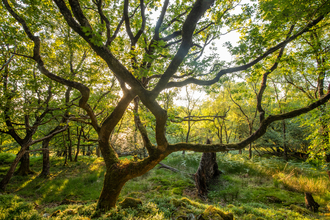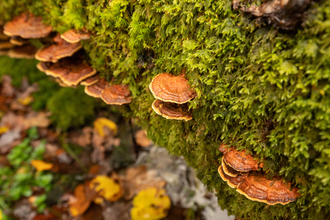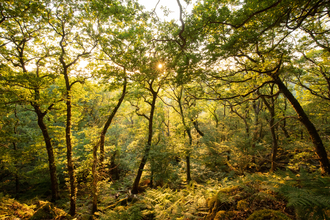Cornwall Wildlife Trust will begin restoring temperate rainforest habitat at West Muchlarnick, near Looe, thanks to a long-term partnership with Aviva, the UK’s leading insurer. Following a successful public appeal in 2024, where donations achieved a £67,645 total against a £50,000 target, the generosity of Cornwall Wildlife Trust’s members and supporters has provided the vital springboard to get the project underway. Funding from Aviva was secured earlier this year for a 50-year project that will involve the planting of more than 30,000 trees.
Cornwall to benefit from The Wildlife Trusts’ temperate rainforest restoration programme
Temperate rainforest © Ben Porter
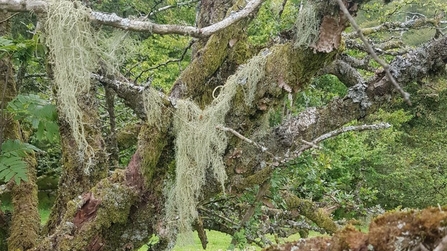
String-of-sausages lichen, Usnea articulata - Rachel Jones
Temperate rainforests are globally rare, with just 1% of the world’s climate being suitable for them1. They once covered around 20% of the British Isles2 but have been largely destroyed over hundreds of years and now cover less than 1% of Britain3. The restoration of this precious habitat is part of a wider programme of nature-based projects funded by Aviva to remove carbon from the atmosphere and to help nature recover.
Local communities and schools in south-east Cornwall will be closely involved in the rainforest restoration project and will benefit from increased access to nature, volunteering and educational opportunities. Rainforest restoration will also provide cleaner air and water, and reduced risk from flooding.
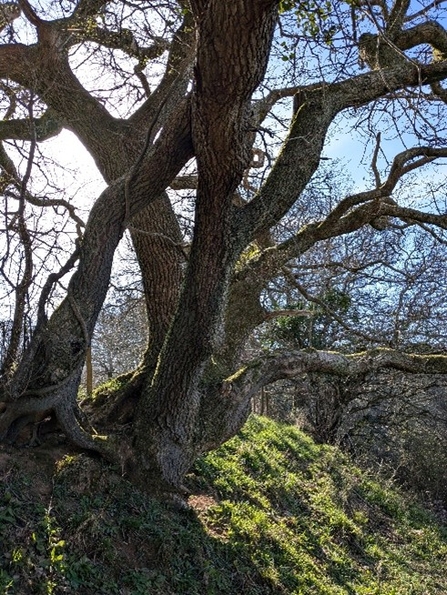
Old and veteran trees provide a rich habitat for insects, fungi and lichens. West Muchlarnick supports the internationally important ‘ancient dry-bark’ lichen community, which thrives on the dry, craggy bark of oaks trees in humid places.
The Aviva funded programme will see temperate rainforests restored in areas where they used to grow along the damper, western climes of the British Isles. Cornwall Wildlife Trust’s 150 acre site at West Muchlarnick is an ideal location for this work, due to its humid valleys and the presence of rare and important species. Experts have so far recorded 19 species of lichen for which the UK has an International Responsibility to conserve due to their rarity elsewhere in the world.
By sensitively expanding the woodland, through a mix of natural regeneration and tree planting, it will be connected with surrounding fragments, enabling the characteristic plants, fungi and animals to spread across the landscape, making them more resilient against future challenges such as climate change.

Floury dog lichen, Peltigera collina, at West Muchlarnick
Alison Smith, Temperate Rainforest Project Manager at Cornwall Wildlife Trust says:
“We’re delighted this rainforest restoration project in West Muchlarnick can get started. It’ll provide vital habitat for wildlife in a time of nature crisis, store large amounts of carbon, and benefit local communities for generations to come. Restoring this incredible habitat will also allow adaptation to climate change, reduce threats from extreme heat, flood and drought, and enable local people to reap the benefits. These are exciting times!”
Claudine Blamey, Group Sustainability Director, Aviva, says:
“Cornwall is the perfect environment for the uniquely precious rainforest habitat. It’s been a feature of the landscape here for thousands of years yet is at risk of disappearing entirely. I’m very proud that as part of our hundred-year partnership with the Wildlife Trusts, we’ve been able to seize the chance to save some remaining fragments and help restore them for many years to come. Thanks to the expertise of Cornwall Wildlife Trust and the involvement of local people, the communities of south-east Cornwall will be able to benefit while at the same time helping the UK get climate-ready.”

Rainforests of the British Isles are temperate rainforests, which means they grow in areas that have high rainfall and humidity, and a low annual variation in temperature. They are also known as Atlantic woodland or Celtic rainforest.
The damp climate and presence of many old and veteran trees provide the ideal conditions for the rich growth of epiphytes – lichens, mosses and ferns, festooning the tree trunks, branches and twigs. An example of rare lichen at West Muchlarnick is the 'floury dog lichen', Peltigera collina.

Floury dog lichen, Peltigera collina, at West Muchlarnick
The near-threatened and nationally rare lichen running spider, Philodromus margaritatus, was also found at the site during a lichen survey this year and has only been recorded a handful of times in the UK. Many of the species found are indicators of old, oceanic woodlands, that have persisted for hundreds of years.

Lichen running spider, Philodromus margaritatus - credit Tyler Berry
Tree species include sessile oak, birch, rowan, holly, alder, willow, and hazel. They are home to stoats, red squirrels, and pine martens, and threatened birds like wood warblers, redstarts, and pied flycatchers. Wet conditions support an abundance of mosses, liverworts, lichens, and ferns – many of which grow on the trees or cover boulders and ravines. The dampness is ideal for fungi, including globally rare species like hazel gloves fungus.
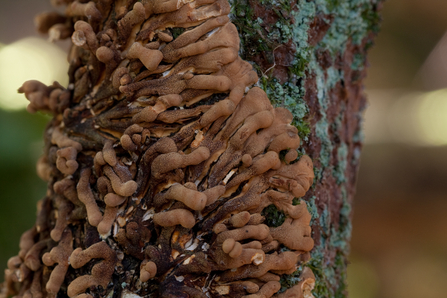
Vaughn Matthews
Notes:
1 DellaSala, D. (2011) Temperate and Boreal Rainforests of the World. Ecology and Conservation. Island Press, 1718 Connecticut Avenue NW, Suite 300, Washington, DC 20009.
2 Averis, B. (2023) A Provisional Definition of Temperate Rainforest in Britain and Ireland.

